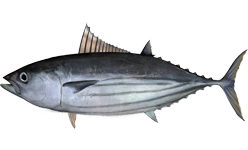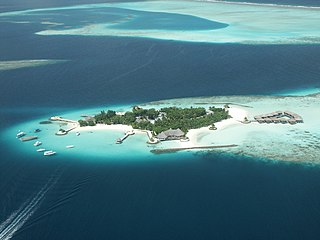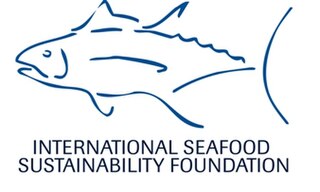Related Research Articles

Fishing is the activity of trying to catch fish. Fish are often caught as wildlife from the natural environment, but may also be caught from stocked bodies of water such as ponds, canals, park wetlands and reservoirs. Fishing techniques include hand-gathering, spearing, netting, angling, shooting and trapping, as well as more destructive and often illegal techniques such as electrocution, blasting and poisoning.

Angling is a fishing technique that uses a fish hook attached to a fishing line to tether individual fish in the mouth. The fishing line is usually manipulated via a fishing rod, although rodless techniques such as handlining also exist. Modern angling rods are usually fitted with a fishing reel that functions as a cranking device for storing, retrieving and releasing out the line, although Tenkara fishing and traditional cane pole fishing are two rod-angling methods that do not use any reel. The fish hook itself can be additionally weighted with a denser tackle called a sinker, and is typically dressed with an appetizing bait to attract and entice the fish into swallowing the hook, but sometimes an inedible fake/imitation bait with multiple attached hooks is used instead of a single hook with edible bait. Some type of bite indicator, such as a float, a bell or a quiver tip, is often used to relay underwater status of the hook to the surface and alert the angler of a fish's presence.

The yellowfin tuna is a species of tuna found in pelagic waters of tropical and subtropical oceans worldwide.

Gillnetting is a fishing method that uses gillnets: vertical panels of netting that hang from a line with regularly spaced floaters that hold the line on the surface of the water. The floats are sometimes called "corks" and the line with corks is generally referred to as a "cork line." The line along the bottom of the panels is generally weighted. Traditionally this line has been weighted with lead and may be referred to as "lead line." A gillnet is normally set in a straight line. Gillnets can be characterized by mesh size, as well as colour and type of filament from which they are made. Fish may be caught by gillnets in three ways:
- Wedged – held by the mesh around the body.
- Gilled – held by mesh slipping behind the opercula.
- Tangled – held by teeth, spines, maxillaries, or other protrusions without the body penetrating the mesh.

Seine fishing is a method of fishing that employs a surrounding net, called a seine, that hangs vertically in the water with its bottom edge held down by weights and its top edge buoyed by floats. Seine nets can be deployed from the shore as a beach seine, or from a boat.

The skipjack tuna is a perciform fish in the tuna family, Scombridae, and is the only member of the genus Katsuwonus. It is also known as katsuo, arctic bonito, mushmouth, oceanic bonito, striped tuna or victor fish. It grows up to 1 m (3 ft) in length. It is a cosmopolitan pelagic fish found in tropical and warm-temperate waters. It is a very important species for fisheries.

A fish aggregatingdevice (FAD) is a man-made object used to attract pelagic fish such as marlin, tuna and mahi-mahi. They usually consist of buoys or floats tethered to the ocean floor. Various types of FADs have been employed in the traditional fishing cultures of Island Southeast Asia, Japan, and Malta for centuries. Modern FADs are increasingly being used in modern commercial and sport fishing.

Artisanal fishing consists of various small-scale, low-technology, low-capital, fishing practices undertaken by individual fisherman. Many of these households are of coastal or island ethnic groups. These households make short fishing trips close to the shore. Their produce is usually not processed and is mainly for local consumption. Artisan fishing uses traditional fishing techniques such as rod and tackle, fishing arrows and harpoons, cast nets, and small traditional fishing boats. For that reason, socio-economic status of artisanal fishing community has become an interest of the authorities in recent years.
Lampuki is the Maltese name for the dorado or mahi-mahi, a kind of fish that migrates past the Maltese islands during the autumn. The fishing season for lampuki is from 15 August through to the end of December, in accordance with Article 12 of Regulation (EU) No. 1343/2011 of the European Parliament and of the Council of 13 December 2011.

A fishing vessel is a boat or ship used to catch fish and other valuable nektonic aquatic animals in the sea, lake or river. Humans have used different kinds of surface vessels in commercial, artisanal and recreational fishing.

A factory ship, also known as a fish processing vessel, is a large ocean-going vessel with extensive on-board facilities for processing and freezing caught fish or whales. Modern factory ships are automated and enlarged versions of the earlier whalers, and their use for fishing has grown dramatically. Some factory ships are equipped to serve as a mother ship.

Fishing techniques are methods for catching fish. The term may also be applied to methods for catching other aquatic animals such as molluscs and edible marine invertebrates.
The following outline is provided as an overview of and topical guide to fishing:
This is a glossary of terms used in fisheries, fisheries management and fisheries science.

The fishing industry in the Maldives is the island's second main industry. According to national tradition in the words of former President Maumoon Abdul Gayoom, "Fishing is the lifeblood of our nation, it is inborn. From the soil on which we live, to the sea around us, it remains an integral part of our existence. Fishing, and our country and its people, [are] one and shall remain inseparable forever." The Maldives has an abundance of aquatic life and species of fish. Common are tuna, groupers, dolphin fish, barracuda, rainbow runner, trevally and squirrelfish and many more. Aside from being of essential importance to the economy, fishing is also a popular recreational activity in the Maldives, not only among locals but by tourists. The islands have numerous fishing resorts which cater for these activities.

Cross Seamount is a seamount far southwest of the Hawaii archipelago, about equidistant from the cities of Honolulu and Kona. It is one of the numerous seamounts surrounding Hawaii, although unrelated to the Hawaiian hotspot. It is notable for being one of the best studied of the numerous seamounts surrounding Hawaii, as it has been included in numerous biological surveys, most recently in 2007. It is also a site of offshore fishing, for its abundant tuna. The fishery management problems at Cross Seamount are typical of management problems in many fisheries, and its small size makes it a scientifically useful model for the analysis of fishery management.

International Seafood Sustainability Foundation (ISSF) was formed in 2009 as a global, non-profit partnership among the tuna industry, scientists and World Wide Fund for Nature. The multistakeholder group states its mission is "to undertake science-based initiatives for the long-term conservation and sustainable use of tuna stocks, reducing bycatch and promoting ecosystem health". Regional Fisheries Management Organizations (RFMOs) are primarily responsible for managing the world's tuna stocks—skipjack, yellowfin and albacore tuna, the species most commonly processed for canned and shelf-stable tuna products, but their parliamentary procedures too often allow the short-term economic and political interests of nations to prevent sustainable measures from being adopted. ISSF works to ensure that effective international management practices are in place to maintain the health of all the tuna stocks.
The Nauru Agreement Concerning Cooperation in the Management of Fisheries of Common Interest, or The Nauru Agreement is an Oceania subregional agreement between the Federated States of Micronesia, Kiribati, the Marshall Islands, Nauru, Palau, Papua New Guinea, Solomon Islands and Tuvalu. The eight signatories collectively control 25–30% of the world's tuna supply and approximately 60% of the western and central Pacific tuna supply.

The Pacific Islands Forum Fisheries Agency (FFA) is an intergovernmental agency established in 1979 to facilitate regional co-operation and co-ordination on fisheries policies between its member states in order to achieve conservation and optimum utilisation of living marine resources, in particular highly migratory fish stocks, for the benefit of the peoples of the region, in particular the developing countries. The office campus is located in Honiara, Solomon Islands

Of the twelve species of billfish, there are six species of Billfish in the Indian Ocean.
References
- ↑ Kihara, Yoshifumi (December 1981). "Fishery Based on the Payao Method in the Philippines". Suisan Sekai. 30 (12): 78–84.
- 1 2 3 4 Jani, Jarina Mohd (2021). "The Status of Artisanal Fish Aggregating Devices in Southeast Asia". In Otake, Shinya; Bortone, Stephen A. (eds.). Modern Fisheries Engineering. CRC Press. ISBN 9781000201321.
- 1 2 3 Itano, David; Fukofuka, Siosifa; Brogan, Deirdre (August 2004). The Development, Design and Recent Status of Anchored and Drifting FADs in the WCPO. SCTB17 Working Paper INF–FTWG–3 (PDF). Majuro, Marshall Islands: 17th Meeting of the Standing Committee on Tuna and Billfish.
- 1 2 Wesley A. Armstrong and Charles W. Oliver, "Recent Use of Fish Aggregating Devices in the Eastern Tropical Pacific Tuna Purse-Seine Fishery: 1990-1994," Southwest Fisheries Science Center. PDF. Last accessed 20 December 2006
- ↑ Malcolm I. Sarmiento, Jr and Cesar M. Drilon, Jr, "Establishment of Tuna Productivity Project in Davao Gulf," Republic of the Philippines (Department of Agriculture). Last accessed 20 December 2006
- ↑ Haruko Yamashita, "Problems of Export-Oriented Yellowfin Tuna Industry -Indonesia and the Philippines," Meikai University. PDF Archived 2006-09-15 at the Wayback Machine . Last accessed 20 December 2006
- ↑ T. Yonemori, H. Yanagawa and Lui Yean Pong," "Interactions of longtail tuna fisheries in the western South China Sea," Southeast Asian Fishery Development Center. Last accessed 20 December 2006
- ↑ A.D. Lewis, "Review of tuna fisheries and the tuna fishery statistical system in the Philippines," Commission for the Conservation and Management of Highly Migratory Fish Stocks in the Western and Central Pacific. PDF Archived 2007-10-06 at the Wayback Machine . Last accessed 20 December 2006
- ↑ Raymond M. Buckley, David G. Itano and Troy W. Buckley, "Fish Aggregation Device (FAD) Enhancement of Offshore Fisheries in American Samoa," Workshop on Pacific Inshore Fishery Resources. PDF. Last accessed 20 December 2006
- ↑ Ricardo G. Sigua and Glenn D. Aguilar, "Maritime Incident Analysis Using GIS," Journal of the Eastern Asia Society for Transportation Studies vol. 5, October 2003. PDF. Last accessed 20 December 2006

